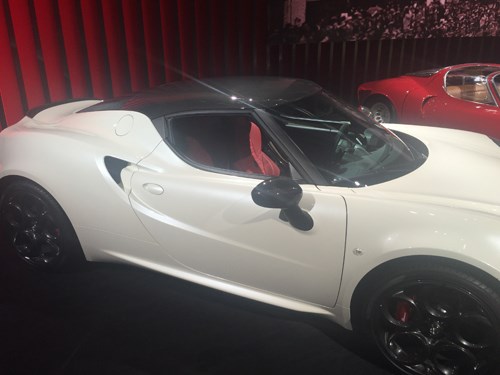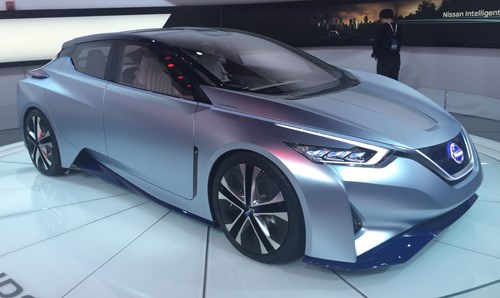What the Detroit Auto Show does and does not show
There are composites seen and unseen at the North American International Auto Show in Detroit, and hints about what the next few years might bring.

Ford GT.
Walking the North American International Auto Show (NAIAS; aka, the Detroit Auto Show) last week in Detroit, MI, US, it was not difficult to get excited about the automotive industry — or, as some automakers are calling it, the mobility industry. The bright lights, loud music, big crowds, attractive concept cars and the latest and greatest production vehicles ranging from two-seater all-electrics to gargantuan pickups concentrated the automotive industry's energy to convey a distinct sense of optimism about where this market is headed.

Carbon fiber wheel for the Ford GT350
It was also not difficult, walking the show, to detect the influence of composites, for any automaker that uses carbon fiber on a visible part apparently is duty-bound — very likely for aesthetic and marketing reasons — to make sure that the tell-tale black (and in one case, blue) weave is highly visible. Indeed, carbon fiber could be found in rearview mirrors, in interior trim parts, in roofs, and in the exterior trim of concept cars (see photos). And then there was the carbon fiber you could not see (or not see as easily), including in the monocoques of the BMW i8 and i3 and the Alfa Romeo 4C Coupe and Cabriolet. And probably others that I couldn't see.

Alfa Romeo 4C Coupe, with carbon fiber composite monocoque.
What struck me, looking at all of the 2016 model year vehicles at the show, was that I was seeing automotive technology that is, for the most part, about two years old. That is, the design cycle of the automotive industry forces automotive OEMs to work ahead of itself, which means that much of the material technology on the floor in Detroit was conceived of in 2013-2014. So, for all of the talk of late about the incursion of composites into automotive structures, it will likely be a year or two before we see more vehicles with more composites in more structural applications.

Carbon fiber in Mercedes Benz sideview mirror.
Then again, it's likely that whatever we see of composites in 2018 at the NAIAS will look a lot like it did in 2016, with visible carbon fiber emphasized, and all of the other carbon fiber (likely a lot more of it) out of direct sight. And this, I suppose, is the point. Composites, to have a seat at the table, must perform with adaptability, flexibility and speed. If, in fact, automakers are becoming "material agnostic," then all of the materials at their disposal must be adaptable to a variety of designs and applications. The consumer, after all, is buying a vehicle to meet their transportation needs, regardless of material.
So, we'll check in with the NAIAS from time to time for a holistic view of how the automotive world is evolving, but for composites professionals like you, we'll stay focused on those structures that are a little harder to see.

Nissan TDS concept car, with carbon fiber trim under a transluscent blue gelcoat.
Related Content
-
Cryo-compressed hydrogen, the best solution for storage and refueling stations?
Cryomotive’s CRYOGAS solution claims the highest storage density, lowest refueling cost and widest operating range without H2 losses while using one-fifth the carbon fiber required in compressed gas tanks.
-
Plant tour: Albany Engineered Composites, Rochester, N.H., U.S.
Efficient, high-quality, well-controlled composites manufacturing at volume is the mantra for this 3D weaving specialist.
-
3D-printed CFRP tools for serial production of composite landing flaps
GKN Aerospace Munich and CEAD develop printed tooling with short and continuous fiber that reduces cost and increases sustainability for composites production.














.jpg;maxWidth=300;quality=90)

